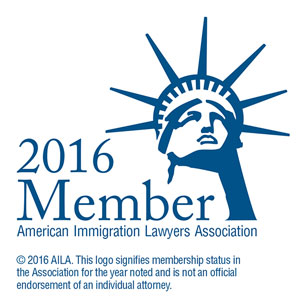Supreme Court Decision Limits Nationwide Injunctions Giving More Power to Trump to Violate the Constitution
On June 27, 2025, in a case implicating President Trump’s Executive Order (EO) on birthright citizenship, the U.S. Supreme Court issued a decision limiting federal courts’ ability to issue nationwide injunctions blocking EOs and broad national policies. It explained that in such cases, courts should normally only block federal policies for the individuals or organizations that bring a lawsuit, unless a statute or class action process allows broader relief. This ruling makes it less likely that a single lawsuit will be able to stop a federal policy from taking effect across the entire country.
The Supreme Court’s order incorporates a change to the effective date of the EO, which was agreed to by the government. The Court stated that the EO does not apply to children born since January 20, 2025, and for 30 additional days after the order. Under the decision, all children born in the United States before July 28, 2025, regardless of their parents’ immigration status, will be recognized as U.S. citizens by the executive branch of the federal government.
Justice Barrett, who wrote for the majority acknowledged, arguments that “the universal injunction ‘give[s] the Judiciary a powerful tool to check the Executive Branch.’ But federal courts do not exercise general oversight of the Executive Branch; they resolve cases and controversies consistent with the authority Congress has given them,” she emphasized. “When a court concludes that the Executive Branch has acted unlawfully, the answer is not for the court to exceed its power, too.” The justices held along ideological lines that the Judiciary Act of 1798 does not authorize federal district court judges to issue sweeping injunctions that stop the government from enforcing a policy throughout the country.
Justice Sonia Sotomayor dissented, in an opinion that she read from the bench, which signaled her strong disagreement with the majority’s ruling. She stated that the majority had ruled that, “absent cumbersome class-action litigation, courts cannot completely enjoin even such plainly unlawful policies unless doing so is necessary to afford the formal parties complete relief. That holding renders constitutional guarantees meaningful in name only for any individuals who are not parties to a lawsuit.”
The decision did not address the merits or constitutionality of the EO, and we have discussed previously that the EO is probably unconstitutional and we hope that the Supreme Court will agree when it rules on the merits. There will be continuing and evolving uncertainties, including legal challenges to the birthright citizenship order in the federal courts. For example, filed within hours of the decision, a lawsuit in New Hampshire seeks to designate a nationwide class of children needing protection from the EO. The nonprofit plaintiff organization, Casa Inc., also moved swiftly to modify their challenges into a class action. Indeed, the majority order that deemed nationwide injunctions a “shortcut to relief that benefits parties and nonparties alike” did not preclude federal courts from providing relief through class actions. Meanwhile, at a press conference on June 27, 2025, President Trump announced that the administration plans to take additional actions to end birthright citizenship. These efforts will likely take the form of new agency rules, policies, and guidance aimed at implementing the EO.
If there is any issue that cries out in favor of the universal injunction it is for a court to protect a newborn from a blatantly unconstitutional executive order which the Supreme Court majority sadly failed to do. First it was outrageous that the Supreme Court used this case to demolish the notion of the universal injunction involving such a blatantly unconstitutional executive order. Steve Vladeck states that class actions are more difficult to bring and are also subject to interlocutory appeals whether the court appropriately certified the class. Even though Justice Barrett held that prohibiting enforcement of the order against the child of a pregnant plaintiff would give that plaintiff complete relief, and extending the injunction to all similarly situated individuals will not render the relief more complete, this limitation on complete relief should not apply to a state plaintiff. And if a state asks for complete relief and gets it from a district court then this too will be appealed to the Supreme Court, and there is a risk that a state would only be given relief for those who reside in the state. This could result in disastrous disparities in a birthright citizen case, as a child who is born in New Jersey and recognized as a citizen but who later moves to Texas would not be recognized as a citizen in that state.
The cumbersome class action is no substitute for a court to quickly block a blatantly unconstitutional executive order under universal jurisdiction. What if there was an EO prohibiting members of a religion from openly worshiping? A court should be able to quickly block it under universal jurisdiction.
What if Trump issues an EO demanding that all his opponents be shipped to a prison in El Salvador? If one such well-heeled opponent goes to court and gets an order it will only benefit her, and each opponent will have to obtain a similar order as Trump can otherwise keep on enforcing his unconstitutional actions.
Parents in H-1B/H-4 nonimmigrant visa status of a newborn in states that did not challenge the birthright citizenship EO will have to individually sue or join class actions to ensure that their child is recognized as a US citizen, or they are welcome to come to a state like New York or Massachusetts to give birth to their child. But how cruel to force the mother to travel when she is already in labor!
The Supreme Court’s order allows Trump to deny people rights that are embedded in the Constitution so long as they have not found a lawyer or asked a court to protect their rights, and even when they do, they may not succeed in that court. It aligns Trump’s America to an autocratic state, or worse, to a fascist regime.
We also fear that ICE could start deporting plaintiffs and even newborns if they are here unlawfully before they get a favorable court order. The executive order applies not only to children of two undocumented parents, but also to the U.S. born children of parents who hold a valid nonimmigrant status, such as H-1B and H-4. How will a child as soon as it is born acquire H-4 status? One needs to be admitted into the US in H-4 status or change from another nonimmigrant status into H-4 status. Perhaps, the Trump administration may need to issue a regulation recognizing H-4 status of the child at the time of its birth. As we noted in a prior blog, the best chance for Indian-born beneficiaries of approved I-140 petitions who are trapped in the employment-based second (EB-2) and third (EB-3) preference backlogs to obtain permanent residence without waiting for several decades could be sponsorship by a U.S.-born adult child. Parents of children born after the effective date of the executive order may no longer have this opportunity. The executive order will cruelly create a permanent underclass of noncitizens if they are unable to challenge it individually or in a class action. The child in H-4 status would have to leave the US when it turns 21 unless it finds a way to change to another nonimmigrant status or obtain permanent residence independently such as through marriage with a U.S. citizen.
People have rightly observed that the nationwide injunction has also benefitted Republican controlled states that are against pro-immigration policies such as the successful thwarting of DACA by Judge Hanen in a federal district court in Texas who held that DACA was unlawful and issued a nationwide injunction. On the other hand, even though Judge Hanen ruled DACA to be unlawful, his ruling has been appealed, and DACA still benefits its recipients in allowing them to extend their work permits since June 2012. Even if the Supreme Court ultimately agrees with Judge Hanen, there is a possibility that Congress can step in and provide a path for citizenship to DACA recipients. If a policy is challenged in a legal action, the government that issued it can still defend it and Congress can also step in. By contrast, without the benefit of a nationwide injunction, a blatantly unconstitutional executive order can continue to stand and adversely impact people, even newborn children.




